Submitted by WA Contents
Francis Kéré uses sustainable wooden logs for Tippet Rise Art Center pavilion in Montana
United States Architecture News - Jul 17, 2019 - 03:39 15413 views
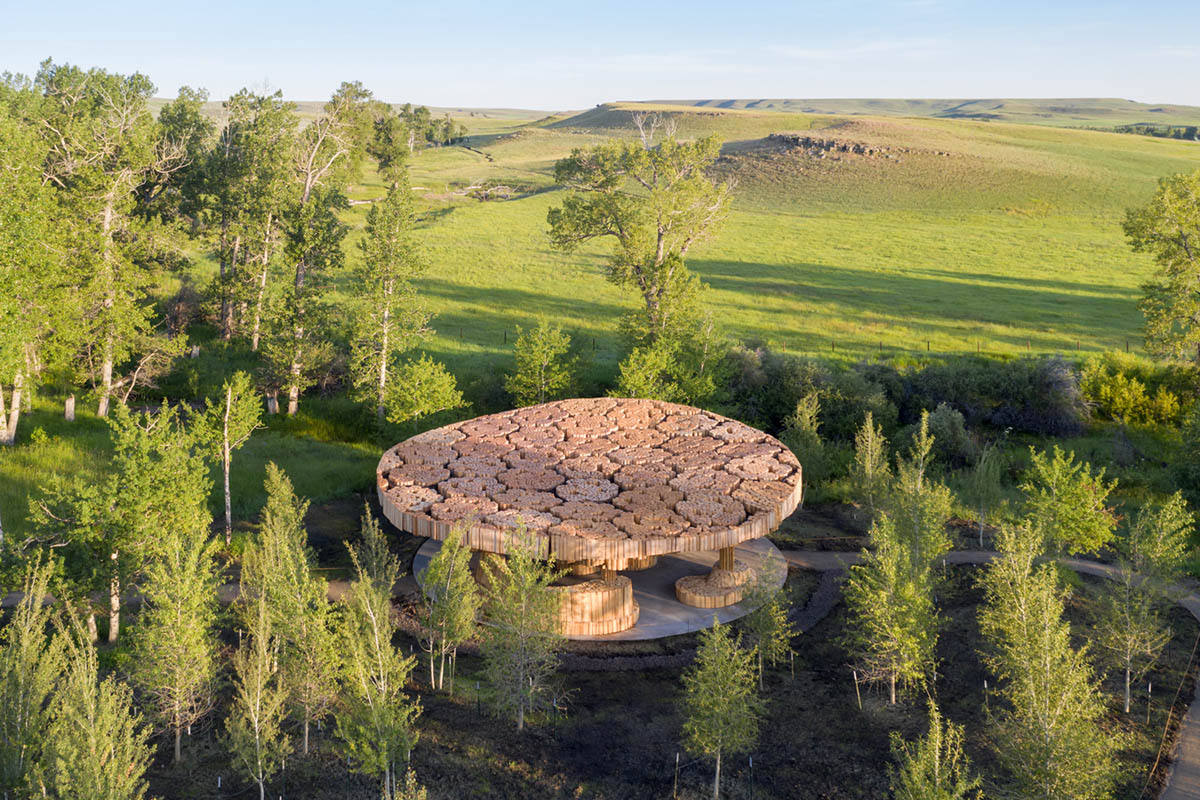
Berlin-based Burkinabe architect Francis Kéré has completed the Tippet Rise Art Center pavilion in Fishtail, Montana, USA. The architect used sustainable wooden logs - locally sourced from a natural pruning process that saves forests from parasitic bugs - to built this pavilion.
Named Xylem, the pavilion was designed as a gathering space for the Tippet Rise Art Center in which it offers a quiet, protective shelter for the visitors of the ranch.
The most striking feature of the pavilion lies in its construction phase: the architect used bundles of local ponderosa and lodge pole pine logs which are used in "a natural pruning process" that saves forests from parasitic bugs. The architect takes inspiration from the wooden and straw toguna structures sacred in Dogon communities in West Africa.
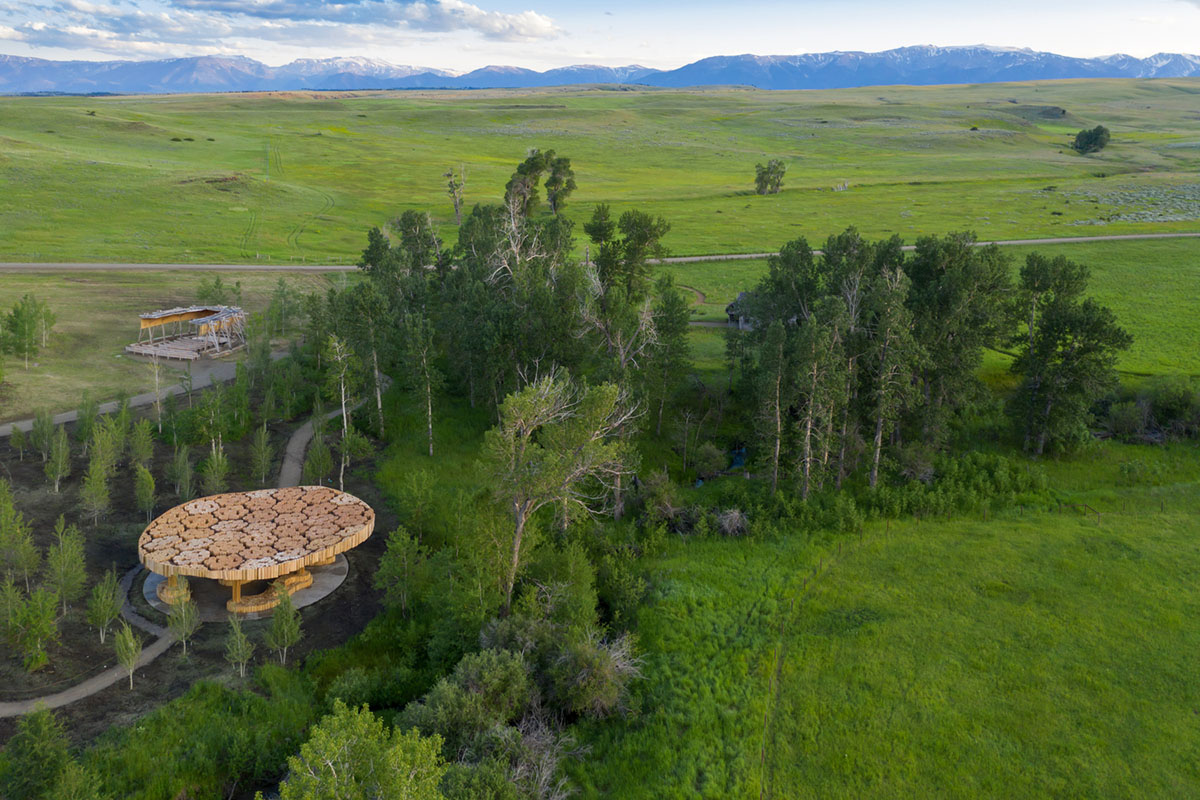
The name of the pavilion evoke the vital internal layers of a tree’s living structure, Xylem is a place where visitors may gather to converse, contemplate the views of the aspen and cottonwood trees near the bank of Grove Creek, or sit and meditate in solitude.
Located in a slightly sunken landform between the main facilities of the Art Center and the beginning of the hiking tracks, the pavilion rises in a clearing surrounded by aspen trees, facing a small creek.
The pavilion is entirely carved in wooden logs and it symbolically invites the visitor, who in the Tippet Rise Art Center is confronted with nature at its widest scale, to access the most secret part of nature, the heart of the trees.

"The logs of the canopy are assembled in circular bundles bore by a modular hexagonal structure in weathering steel, lying on top of seven steel columns. The upper surface of the canopy is carved sinuously in order to create a rounded topography that blends in the surrounding hills," said Kéré Architecture.
"At the same time massive and light, the roof is inspired by the “toguna”, the traditional most sacred space in every Dogon village, a wooden and straw shelter designed in order to protect from the sun but at the same time to allow the ventilation of the shaded space underneath."

Covering a 200-square-metre area, Xylem welcomes visitors and the whole community that revolves around the Tippet Rise Art Center to a unique linkage between Montana and Burkina Faso as it is built in parallel with the Naaba Belem Goumma Secondary School in Gando, Francis Kéré’s home village in Burkina Faso, dedicated to Francis Kéré’s father, which will be open to the children of the entire neighboring area in the Burkinabè savannah.
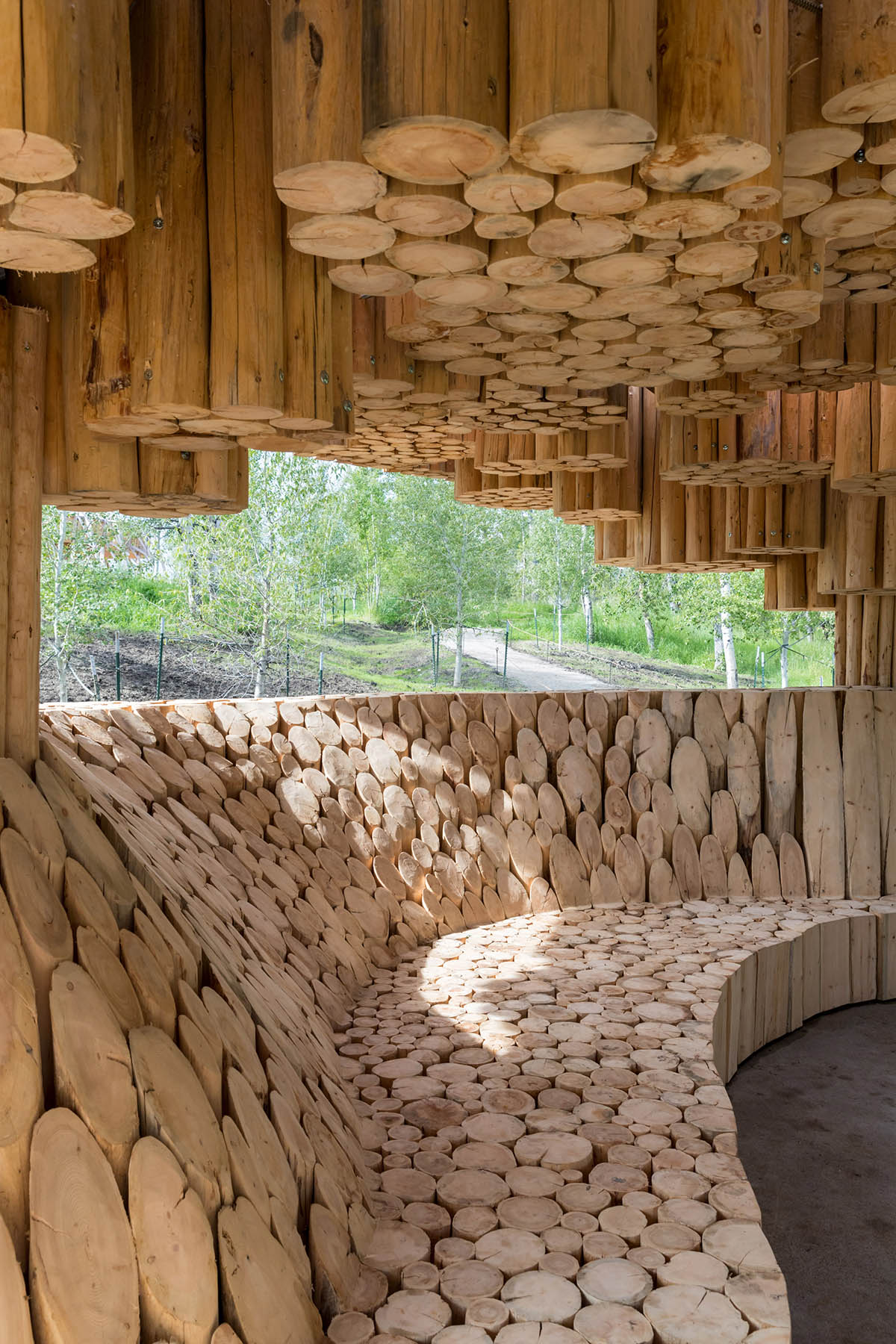
In the pavilion, the structure penetrate sunbeams penetrate via its vertical logs, creating a play of light and shadow that softly hits the underlying organically shaped seating and the polished concrete circular platform.
The spatial complexity of the carved wooden seating elements emphasizes the stunning views of the surrounding landscape through strategic positions and encourages different appropriations by the visitor, who is invited to inhabit them at his wish.
The seating elements’ organic shapes are inspired in part by abstract paintings that artist and Tippet Rise co-founder Cathy Halstead created based on forms of microscopic life, in addition to the sinuous topography of the surrounding hills.
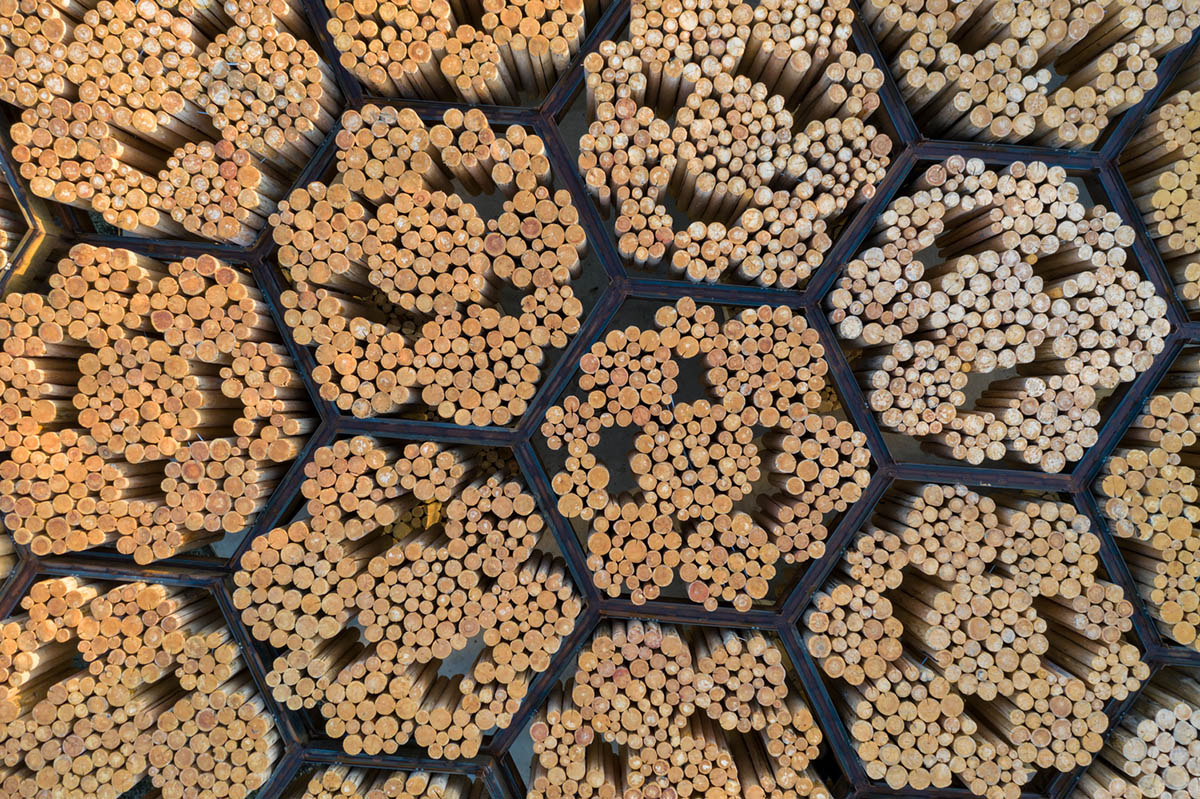
Through exploration, the user can, in fact, discover the different spatial configurations of the pavilion, gather in small groups or have a chat between friends, lie and watch the romantic views with his partner, or sit and meditate in solitude on his visit of the Art Center.

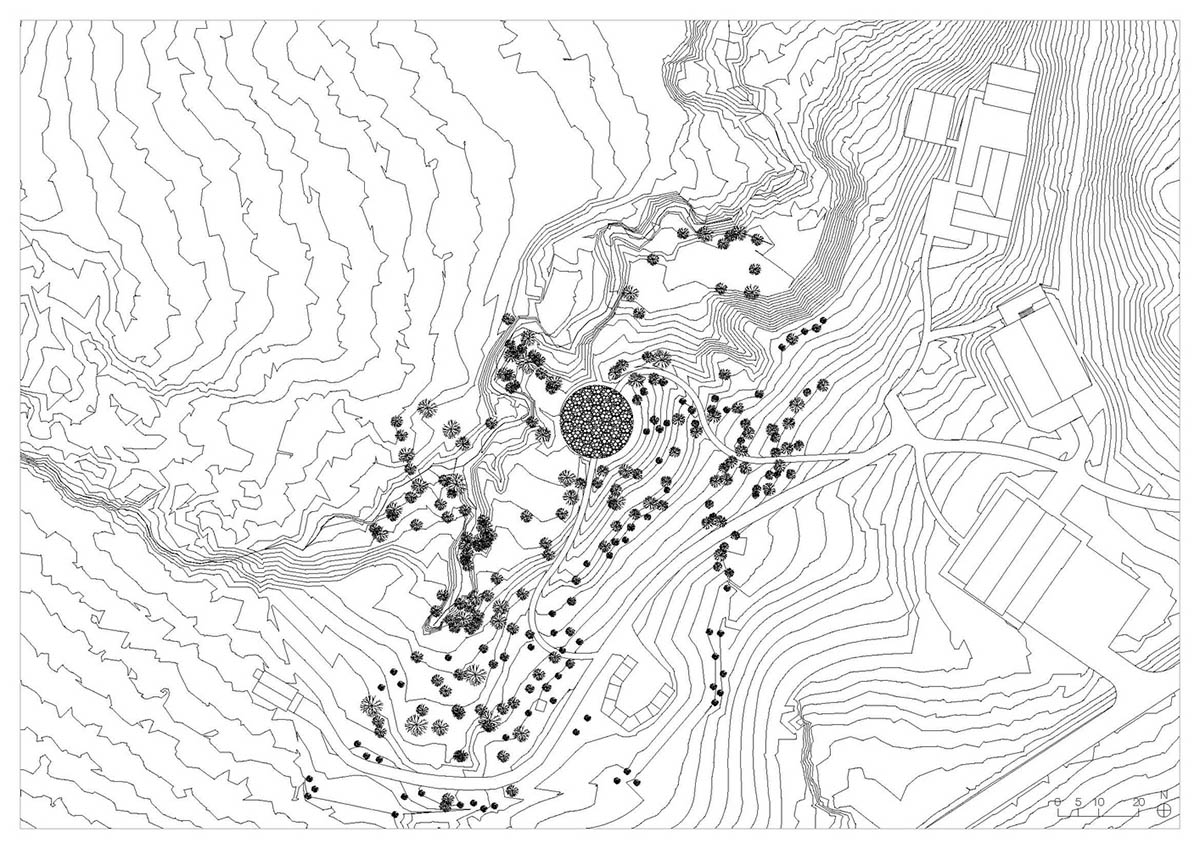

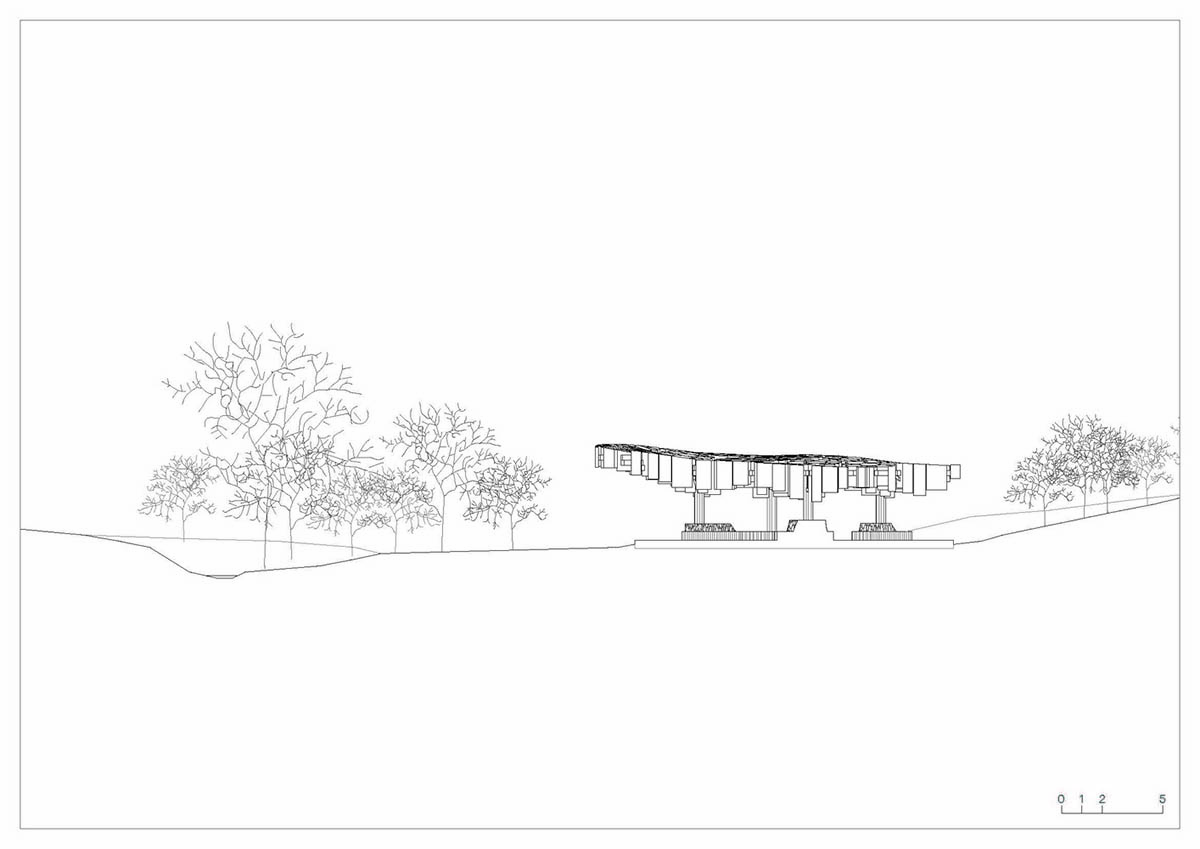
Diébédo Francis Kéré is known with his projects to promote modern and sustainable architecture in Africa. The aims of Francis Kéré are to further the use and development of traditional building techniques among local communities, and to develop innovative methods and building solutions for extreme climatic conditions.
Francis Kéré designed the 2017 Serpentine Pavilion with tree-inspired structure and his latest installation was built at Coachella Festival 2019 - Kéré created the twelve colorful towers referencing the baobab trees that claim a remarkable and dominant presence in his native West African village of Gando, Burkina Faso. Kéré runs his offices in Berlin and Gando.
Project facts
Architect: Kéré Architecture, Diébédo Francis Kéré
Design team: Vincenzo Salierno, Nina Tescari
Contributors: Kinan Deeb, Andrea Zaia, Lina Wittfoht, N’Faly Ismaël Camara
Client: Tippet Rise Art Center, Fishtail, Montana
Project management: Pete Hinmon, Tippet Rise Art Center, Fishtail, Montana
Architect of record: Laura Viklund, Fishtail, Montana
Structural engineer: AECOM, London, United Kingdom
Structural engineer of record: DCI Engineers, Bozeman, Montana
Civil engineer: DOWL Engineering, Billings, Montana
General contractor: On Site Management, Bozeman, Montana
Wood fabricator: Chris Gunn, Gunnstock Timber Frames, Powell, Wyoming
Steel fabrication: TrueNorth Steel, Billings, Montana
Steel erection: Western States Steel Erection, Billings, Montana
Concrete: Davis and Sons Construction, Absarokee Montana
All images © Iwan Baan
> via Kéré Architecture